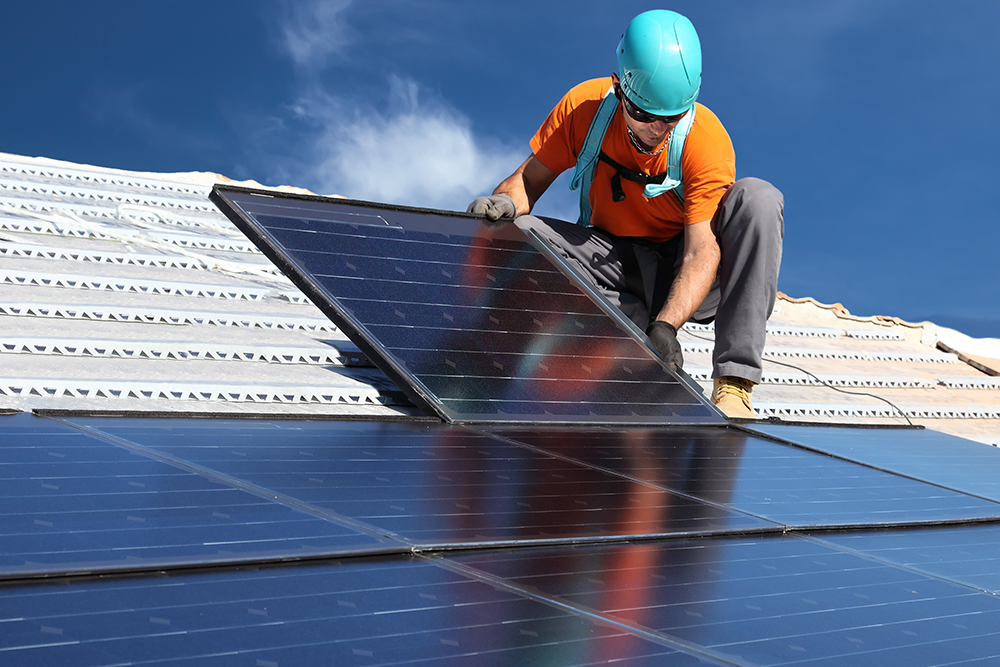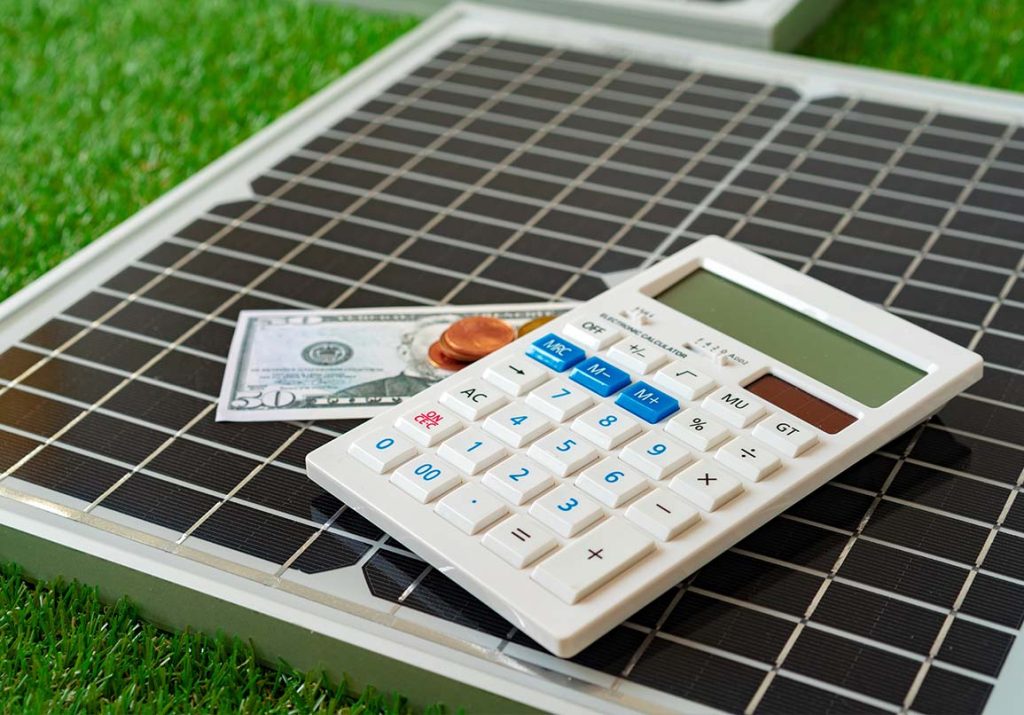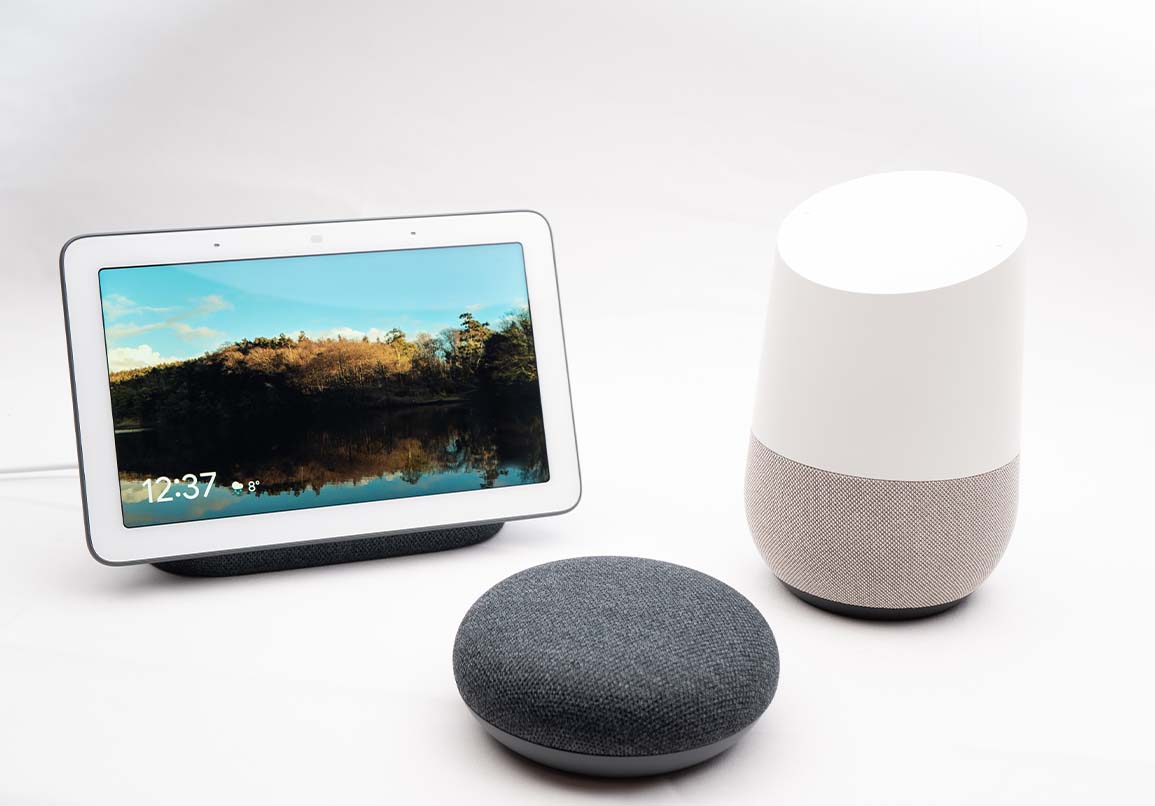Solar energy does not only generate electricity but it also can be used for passive heating. Using solar energy for passive heating is a very economical solution because it minimizes energy use. A passive solar building uses the movement of the sun throughout the day (considering seasonal changes in sunlight) to heat houses. The most important factors in passive solar design are windows by which the sunlight can pass through, absorbers which keep the warmth and the distribution of heat circulation. There are different requirements for different locations. For example in the northern hemisphere windows should be oriented south, while in the southern hemisphere windows oriented north are ideal. The disadvantage of a passive building is that if a house was not originally built in this technology, the renovation cost would be expensive. Even then, there is still the possibility to take steps that minimize the wasting of passive solar energy and minimize your long-term costs. It is possible to use a solar heating system such as solar collectors, which can be used for hot water or even as a source of house heating. The other option for using solar energy is electricity generated with photovoltaic (PV) panels, which can be used together with solar collector systems.
Frequently Asked Questions
- Show All
- EE FAQs
- Electricity
- Energy Metering
- Heating and Cooling
- Partner with us
- Smart Appliances
- Solar
- Window
How does passive solar energy work?
How does passive solar energy work?

How Does Solar Power Affect the Economy?
How Does Solar Power Affect the Economy?
For homeowners and owners of commercial buildings, having their own solar system makes financial sense in most cases. Using solar power also has a positive affect on the local economy: Solar creates jobs and you can support your local economy.

The solar industry provides a number of jobs. Many areas of the industry require local labor. Let’s take a look at some figures from the previous years (this refers to the USA):
- 7.29 million jobs in construction
- 18% of those involve work related to energy efficiency
- 242,343 full-time jobs related to the solar industry
- Solar employment grew 11% from 2013 to 2018
- Solar employment grew six times faster than overall employment
- As of 2018 Solar PV installer is the second-fastest-growing occupation
- The solar industry employs twice as many workers as the coal industry
- The renewable energy sector offers better-paid jobs for low and medium-skilled workers compared to other sectors
Contribute to your community
By having your own solar system installed, you also have the opportunity to contribute positively to the local economy. Take us as an example: whether in New York, Delaware, Florida or California – local installers will install your solar system. Our local Renewable Energy Specialists will guide you through your project.
Enlighten Energy supports local jobs
Our goal is to create jobs in the USA and likely to employ workers to strengthen the local economy. If this is important to you too, be sure to pay attention. Even though we wrote that solar power has a positive effect on the economy solar jobs do not always support the local economy. Many community solar projects are built by companies from states other than the one where it is actually built – just because it is cheaper. This has nothing to do with “community”. A pity!
Do you want to have a solar system installed by a family-owned, locally operating company? Fill out our form or contact us!
How can EE help me save energy in my home?
Our experts first provide quality education to homeowners about energy consumption in their home. Our learning content is split into technology categories which makes it easy to navigate through. Next, our knowledgeable staff continuously monitor homeowner properties’ energy consumption and provides solutions to make their homes more cost-effective and energy-efficient. Finally, we connect homeowners with our partnered professional home improvement contractors to make the process simple and easy.
How home AC system works?
How home AC system works?
Air Condition Systems which are installed in the home have a simple working pattern. Mainly air conditioners provide cold air inside the building or can heat the air in some closed spaces (heating mode).
How do AC systems work?
All these systems use a special chemical fluid which is called refrigerant. Moreover, each AC system has three main components:
- Compressor
- Condenser Coil
- Evaporator Coil
A compressor is a device that raises the gas pressure in the system by reducing its volume. Condenser and evaporator coils are the heat exchangers, parts of the system which are associated with heat transfer. They play an essential role in the refrigerant transfer process.
These components work together and change the phase of the refrigerant from gas to liquid and back again. The compressor raises the system pressure before the refrigerant enters the condenser coil, where it is converted to liquid. The phase change allows heat to be absorbed or released into the surrounding area. After, it is transferred to the evaporator coil. In this part, heat from enclosed spaces, such as rooms or offices, is absorbed by the refrigerant. The refrigerant then stores the heat, which can be easily transported. The heat is released to the outside when the refrigerant returns to its liquid phase. This process is usually called a refrigeration cycle. The air conditioning unit runs and repeats this cycle as long as it reaches the desired room temperature set on the thermostat.

How long will solar energy last?
Solar electric modules life span
Will my solar panels generate electricity forever?
The quick answer to this question is unfortunately no. The typical manufacturer guaranteed solar panel life span is between 25 and 30 years. However, this does not mean that they will stop producing after this time. The majority of solar panels after a period of 25 years produce at least 80% of their rated output power.
Solar energy is great, but how long will my solar panels last?
Solar module manufacturers usually ensure us that their product will last for 25 - 30 years with specific efficiency over this period. Every year, module efficiency slightly decreases. This decrease is otherwise known as the degradation rate. Typical degradation rate values vary from 0.8% per year for regular PV modules to 0.3% per year for premium manufactured modules. According to the NREL analysis paper, around 80% of solar modules last longer than warranty states.
Manufacturers performance warranty
Solar PV module manufacturers will certainly show guaranteed performance over the years on the product datasheet.
Example from one of Trina Solar products.

What can I do to make my solar panels last longer?
Solar electric systems usually require little or no maintenance. PV modules are designed to withstand snow loads and are resistant to weather conditions (wind, rain and even hail). The most important part to keep your system in good shape for a long time is to hire an experienced installer.
To reduce solar module degradation you can:
- Check and clean your installation from debris or other possibly damaging objects
- Hire a professional installer to check for loose system mounting parts, exposed wiring and other areas of concern. Avoid doing that on your own to maintain your warranty.

How much do solar panels cost on average?
How much do solar panels cost on average?
A solar panel's price depends on many factors, such as the type of solar panel, size of the system, rated power of each solar panel, and other technical issues. The average cost of monocrystalline solar panels, which are the most energy-efficient option on the market, starts from $1 per watt up to even $2 per watt. This price only includes the cost of the solar panels. The cost of a complete solar panel system with all the other parts like inverters, wires, mounting systems, and other things is usually between $3-4 per watt. To sum up, solar panels cost can be different depending on the solar panel brand, number of panels, and their type. Building a more advanced system with battery backup increases the system price.

How much does a smart home system cost?
How much does a smart home system cost?
The cost of a smart home system depends on how "smart" of an environment you want to create at your home. DIY projects related to the Smart Home networks, such as Amazon's Alexa or Google Nest, cost between $100 and $1000. These Smart Home Networks, on their own, are already capable of significantly increasing your everyday convenience. However, more complex installations applicable to brand new homes might bring the cost of a Smart Home system up to $10,000 or even higher, depending on the size of your home. On average, for the more complex, wired systems, the cost of human labor per hour is $85.

Costs of the most common home entertainment and comfort improvements:
- smart home hubs - between $100-$1000.
- smart TV or audio system - starting at around $100 for a basic improvement and can reach up to $2000.
- connected appliances - starting at $100 for a smart thermostat to around $500 with a set of wireless smoke detectors. $1500 for a complete smart energy-saving lighting setup.
- smart outlets and plugs - between $20 - $100 for a smart unit without the cost of installation (it is possible to do it yourself).

Moreover, the cost of a smart home system also depends on the kind of network it uses to operate. A Wi-Fi-based smart home system might also require an upgrade of your wireless Internet network at home to allow all of the integrated devices to have sufficient access to the network. If you do not want to play around with your Wi-Fi at home and change the routers you might be interested in ZigBee based smart home environment.
How much does enlighten.energy Cost?
It's free. Enlighten Energy is a energy savings platform for homeowners to use for free. Enlighten Energy equipment, lending and contracting partners work together to provide a streamlined, transparent, and cost effective energy savings platform.How much does it cost to remove solar panels?
How much does it cost to remove solar panels?
Solar panels are devices with long “expiration dates” because they last between 25 to 30 years. However, this does not mean that the panel will suddenly stop working after that time – it means that energy production will drop significantly and may not be sufficient to meet demand. Nevertheless, there may be other reasons besides replacement to remove solar panels, for example: transferring our PV system to another home, patching a portion of your roof or installing an entirely new roof.
Solar power systems are complicated electric components. Due to their complexity, servicing them requires professional attention. Most states require permits to remove solar panels, which increases removal costs. Check your state requirements before the removal process. Your removal cost will vary depending on your site conditions, the full scope of required work, and the travel time for the crew. The total cost of removing solar panels is between $35-75 per panel. The solar panel removal process can be expensive for larger systems and will take more time.
What usually is included in panel removing price:
- Uninstalling and disconnecting solar panels
- Removing/replacing the mounting hardware
- Permissions and inspections

How much electricity can a solar panel generate?
How much electricity can a solar panel generate?
The solar panel rated power.
All solar panels are sold with determined so-called rated power and this is the maximum power a panel can reach under strict laboratory conditions.
There are a few test conditions but STC (Standard Test Conditions) are the most popular.
STC requires the following:
- Solar irradiance 1000W/m2,
- Cell Temperature 25°C,
- Air Mass AM1.5
The solar panel rated power can vary based on technology and size from about 300W up to 600W. Unfortunately, modules are rarely reaching their rated power.

How much energy will a panel produce in one hour?
Energy generation varies on the weather and the time of day, but we can assume that when a panel is generating at 350W for one hour straight, it will produce 0.35 kWh of electricity. It can be simply calculated like so:
P x t = E
Where:
P - the power of solar panel [W]
t - time of generation at this power [h]
E - energy generated [kWh]
How much energy will a panel produce in one year?
Solar system energy generation is the highest in summer when there is a lot of sunlight and the smallest in winter months when the sun is low in the sky and for fewer hours than in the summer.
To estimate your system's annual energy generation we can use the production ratio of kilowatt-hours to kilowatt-peaks (kWh/kWp). These can be easily found on solargis.com.
On the map below, you can see which areas of the US have a bigger potential for generating energy from solar panels.
Map source: solargis.com

If we would place the same 350W panel in Phoenix and New York it would generate different amounts of energy.
In Phoenix, the production ratio is around 1900kWh/kWp while in NYC it would reach a value close to 1350kWh/kWp.
So in Phoenix, this panel would produce 665 kWh while in NYC it would produce only 472 kWh which is about 30% less.
To sum up!
Solar panels will produce different amounts of energy over the year in different locations in the US, but every location is good to invest in solar! The United States has good production potential in comparison to for example Europe where in different countries, the production ratio can vary from 800 to 1700 kWh/kWp while in the U.S.A those values vary from 1000 to 2000 kWh/kWp.

